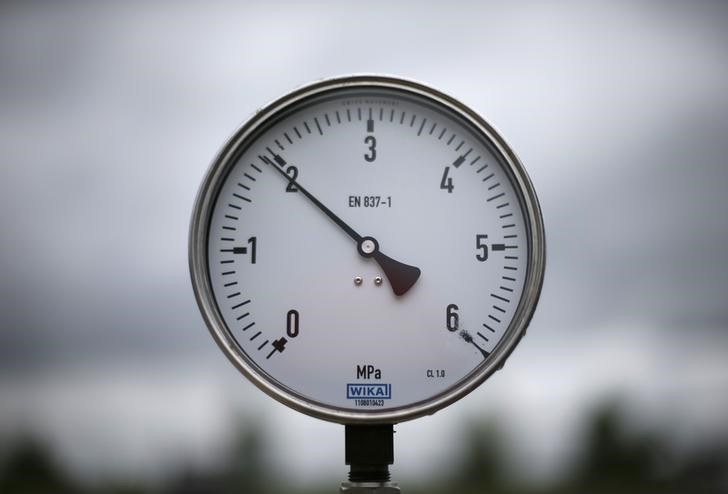[the_ad id="21475"]
[ad_1]
© Reuters.
By Barani Krishnan
Investing.com — “Not in yet”.
Those three words are probably reverberating in the ears of natural gas bulls as prices of the heating fuel tumbled over 7% Wednesday, erasing all gains from the past two days, proving what some have been saying: the bottom is not in yet for a market that’s lost 65% in just two months.
The front-month gas contract on the New York Mercantile Exchange’s Henry Hub settled down 18.8 cents, or 7.3%, at $2.3960 per mmBtu, or metric million British thermal units.
The session trough was $2.369, a low not seen in a front-month gas contract on the hub since Sept. 28, 2020, when it went down to $2.02.
The March gas contract had risen 5.2% on Monday and 2% on Tuesday as short-sellers paused on their activity, allowing longs to lend support at mid-$2 levels to the market.
Even so, analysts at Houston-based energy markets research and trading consultancy Gelber & Associates warned that “it’s a bit too soon to suggest that NYMEX gas futures prices have bottomed.”
In remarks issued Tuesday — and still valid a day later given the market’s performance — Gelber’s analysts said:
“Several catalysts could take prices lower still. For example, if the major weather forecast models show signs of backpedaling on the mid-to-late February pattern shift or shorten its duration as they have pretty much all winter long, or if production rises back above 100 bcf/d, or if volumes to Freeport are interrupted; NYMEX gas futures could test new lows or possibly sink to the $2.00/mmBtu area.”
Gas futures have lost about 65% from December’s highs of above $7. Prior to that, the heating fuel traded at a 14-year peak of $10 in August.
An unusually warm start to the 2022/23 winter has led to considerably less heating demand in the United States versus the norm, leaving more gas in storage than initially thought.
According to the latest reading provided by the EIA, or Energy Information Administration, inventories of the heating fuel stood at 2.583 tcf, or trillion cubic feet for the week ended Jan. 27. That is up 9.4% from the year-ago level of 2.361 tcf, said the EIA. The agency will provide its next storage update on Feb. 9.
Production has, meanwhile, averaged near record highs of around 100 billion cubic feet per day in recent months, significantly weakening the fundamental outlook for gas.
Click Here to Read the Full Original Article at All News…
[ad_2]
[the_ad id="21476"]
